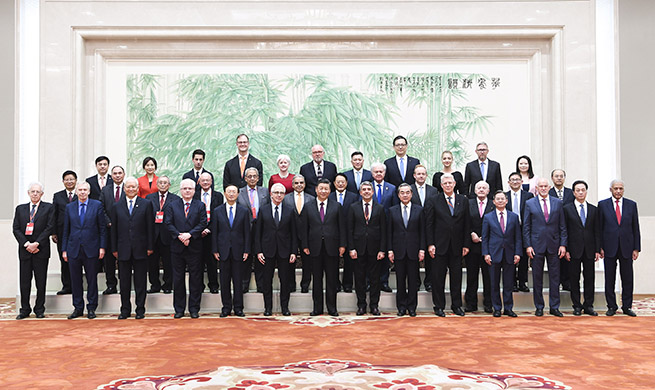BEIJING, Oct. 27 (Xinhua) -- Facial recognition and other digital technologies are not just helping people open bank accounts and make payments in China. They are also helping pigs grow healthier at lower costs for farmers.
Some pigs in northeast China's Jilin Province are "lucky dogs" to experiment with a digital approach in stock breeding.
With overhead cameras that track and identify pigs, the smart solution is able to, among other things, finetune room temperature, measure their weight and feed pigs in a scientific way via robotics, real-time monitoring and data analysis. This is expected to lead to better-quality pork at lower costs, according to the system's developer Chinese fintech giant JD Digits.
From pig farming to tea production, digital solutions are widely used by a growing number of sectors in China, with traditional industries picking up pace in going digital.
The core of industries' digital transformation lies in efficiency improvement, as data analysis might lead to more rational decisions, help tailor the supply to meet the demand, and achieve enhanced efficiency across the whole industrial chain, JD Digits CEO Chen Shengqiang said at the sixth World Internet Conference.
"It's critical for decision-makers to adjust their way of thinking and operations," Chen said.
A survey from global market intelligence firm International Data Corporation (IDC) showed that over 40 percent of Chinese enterprise respondents are committed to transforming their businesses via digital technologies.
Financial, telecom, new retail and brand-oriented manufacturing firms showed rather advanced progress in this field, an analysis of the applicants for IDC's annual digital transformation awards in China showed.
A report on the flow of digitalization-related professionals also revealed growing digitalization across sectors. In addition to information and communication technology sectors, digital talent has started to congregate in areas such as consumer goods, finance, education and corporate services, according to the Tsinghua SEM Center for Internet Development and Governance (CIDG) and LinkedIn China.
Meanwhile, the medical and transportation sectors have shown significant year-on-year improvements in terms of the appeal to digital professionals.
"The continued growth of the digital economy remains primarily dependent upon the digital transformation of traditional industries, and this part of the integrated digital economy has also become the driving force behind China's economic growth," said CIDG director Chen Yubo.
China is stepping up the promotion of the integration of digital technologies with the real economy to support the growth of agriculture, manufacturing and consumption. Six places, including Zhejiang and Guangdong provinces, have been selected to pilot innovative practices in this field.
The IDC expects the digital economy to account for 60 percent of global GDP by 2022, with the share in China even higher at 65 percent.

















